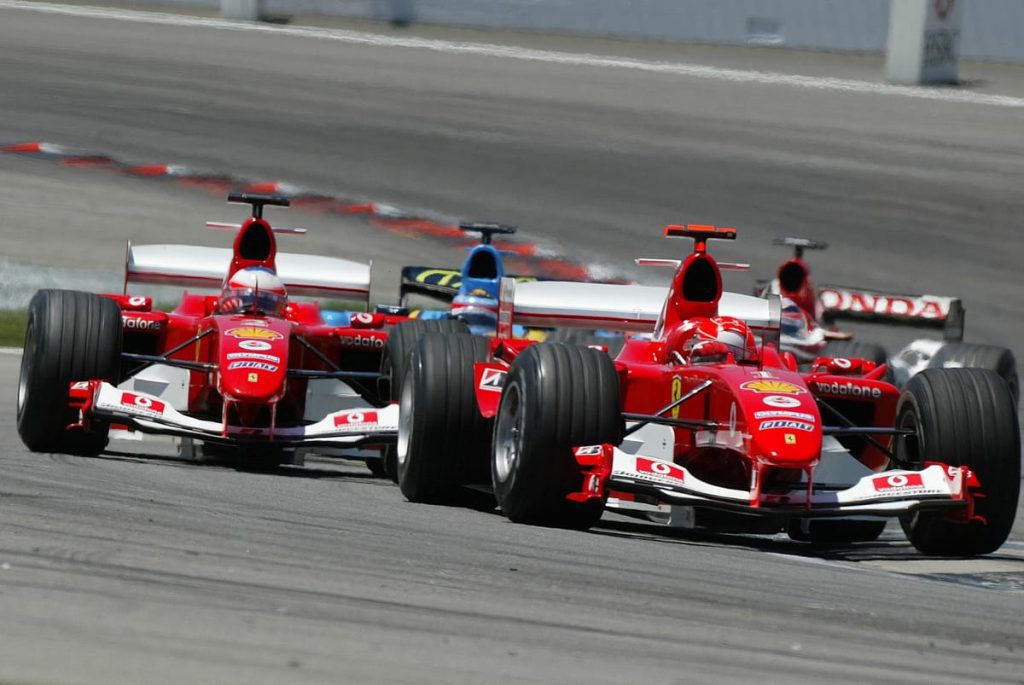Ferrari’s Peak
Ross Brawn, the former chief of Formula 1, reflected on Ferrari’s golden era, stating, “There was a time when Ferrari was performing at its peak. I couldn’t envision how we could improve it further.” He praised the extraordinary car, cohesive technical team, and elite drivers, calling it a difficult time to imagine any further improvements.
Rule Changes and Their Impact
Brawn made these comments during an episode of Pirelli’s Box Box Box YouTube show, where he expressed that Ferrari’s dominance from 2000 to 2004, highlighted by Michael Schumacher and Rubens Barrichello’s successes, was the pinnacle of his career. He believed they would have continued their winning streak if not for unexpected regulatory changes regarding tires that hindered their performance.
Regulatory Challenges Faced
The FIA’s directive in June 2004 aimed to slow down cars, leading to significant rule alterations including aerodynamic changes and restrictions on tire changes during races. Brawn noted the overwhelming success Ferrari enjoyed during the early 2000s was viewed as monotonous by others, prompting regulatory interventions aimed at rebalancing competition.
The Shift in Performance
By 2005, Ferrari’s previously dominant F2004, converted to F2004M for the season, started struggling due to the swift regulatory shifts. The implementation of tighter aerodynamic rules and tire requirements caught Ferrari off guard, severely impacting their competitiveness. Brawn acknowledged that the team’s engineering package failed to adapt quickly enough to these new challenges.
Consequences of the New Regulations
While Ferrari experienced some early success with the F2005, the team faced heightened challenges in balancing performance and reliability, particularly with tire management hampered under the new rules. Despite Schumacher’s impressive performance early in the season, overall reliability and consistency became major hurdles, leading to significant struggles throughout the year.
Understanding the Setbacks
As public criticism of Ferrari’s performance grew, Brawn defended his team and its engineers, asserting that the design philosophies from previous seasons were still sound. He pointed out that the challenges Ferrari faced stemmed from hastily implemented rules rather than deficiencies within the team or its designs.
Looking Forward
Despite a disastrous 2005 season, Ferrari rebounded in 2006 with Schumacher nearly clinching the championship again, aided by the reintroduction of tire changes. This set the stage for ongoing rivalries in F1, leading to Michelin’s eventual exit over disputes regarding new regulations. Although Ferrari achieved further successes in subsequent years, the level of dominance seen in the early 2000s was never replicated.



